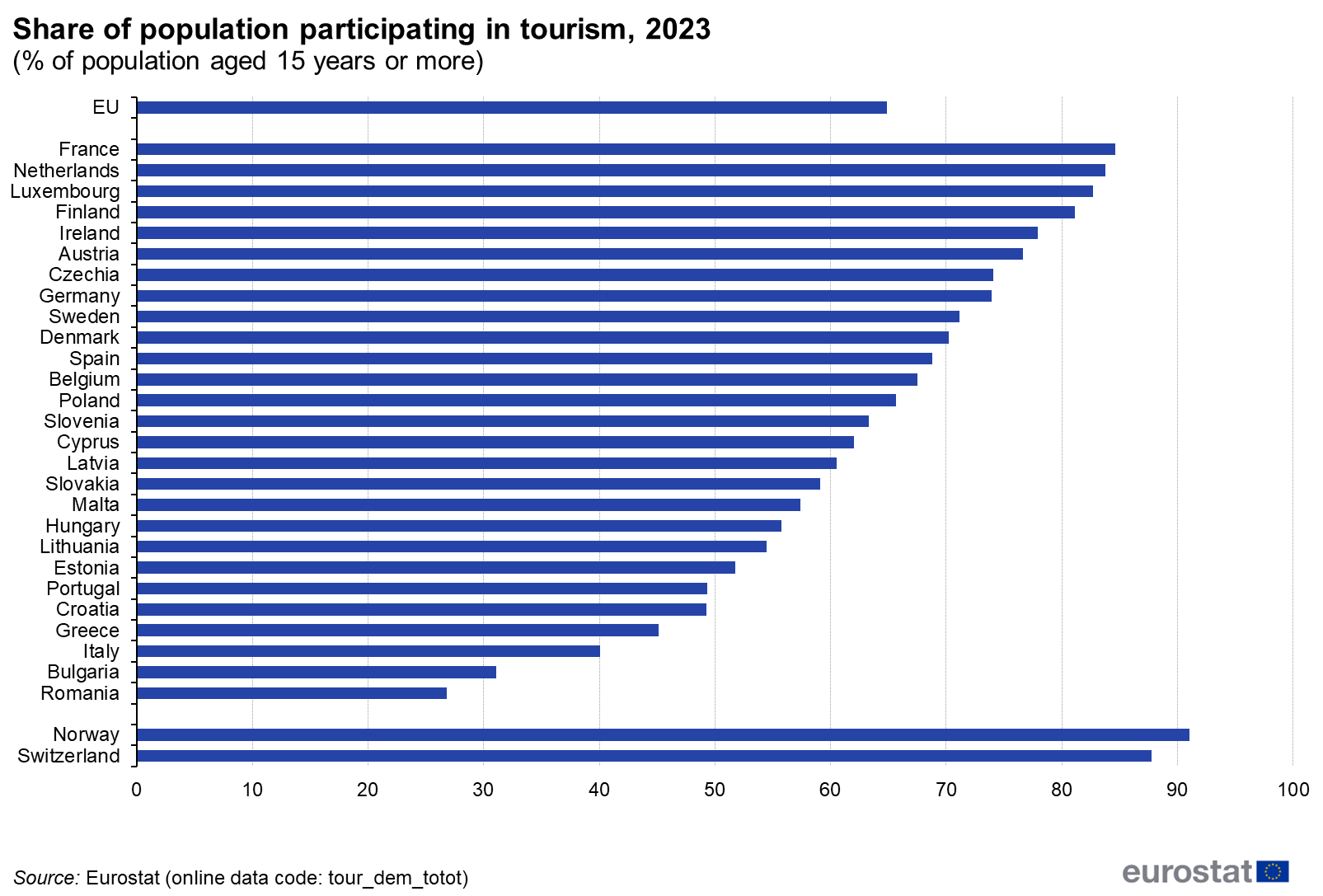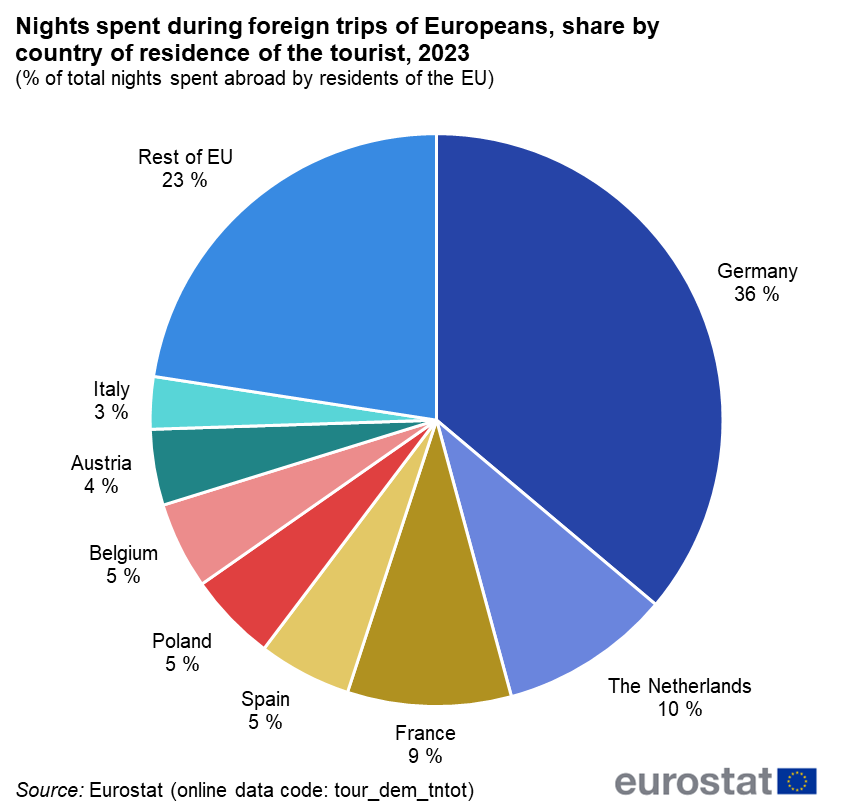Europeans are travelling again – but not equally everywhere
In 2023, 65% of EU residents aged 15 and over took at least one private trip – whether it was for a holiday, a short break, or to visit friends and family. That’s the same level as before the pandemic hit. After a drop in travel during the COVID years (52% in 2020), things are clearly bouncing back – slowly but surely.
But not all countries are equal when it comes to travel. Leading the way are the French, with a whopping 84.6% of people taking at least one trip in 2023. Close behind are the Dutch, Luxembourgers, and Finns – all scoring over 80%.
Countries like Ireland, Austria, Czechia, Germany, Sweden, and Denmark also had high travel rates, all above 70%.
Poland? We’re somewhere in the middle of the pack, just about matching the EU average.
At the other end of the spectrum, only 26.8% of Romanians traveled in 2023. Less than half of people in Bulgaria, Italy, Greece, Croatia, and Portugal took a trip, too.



